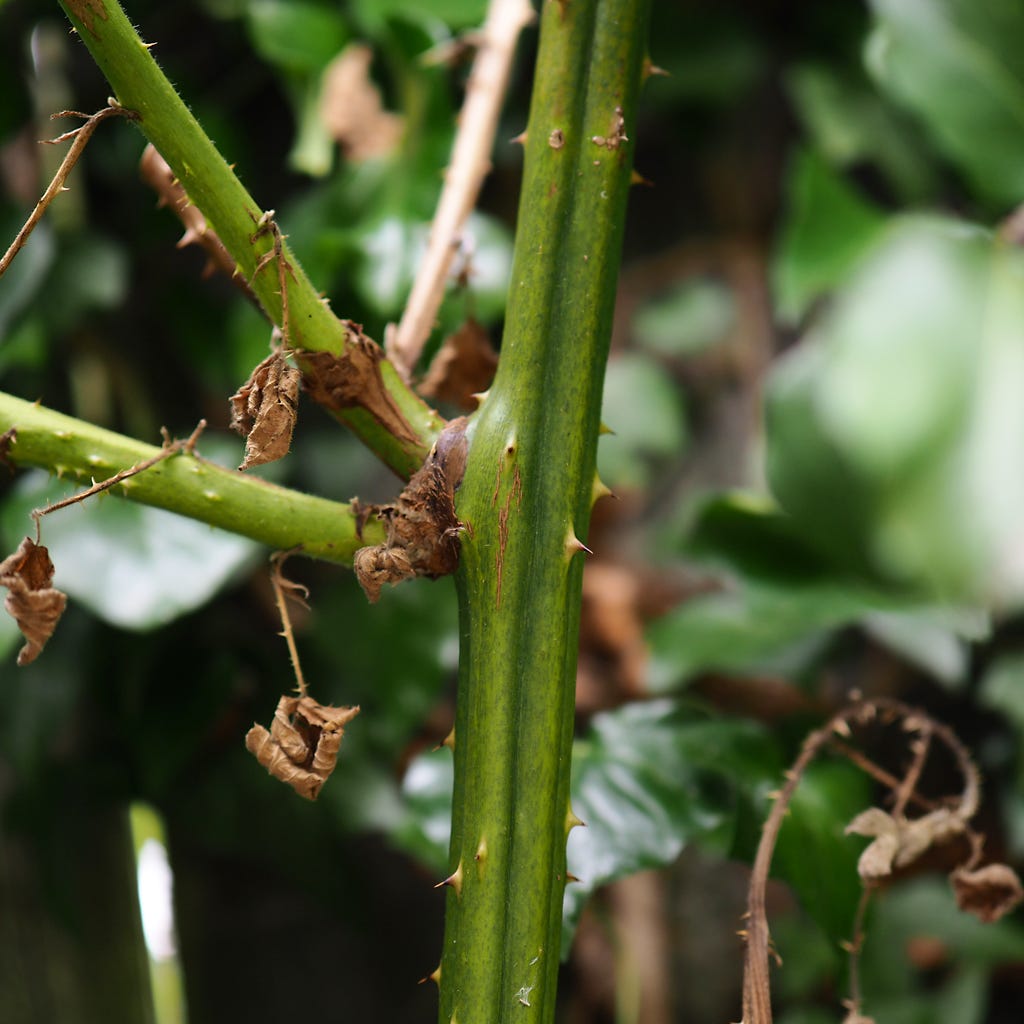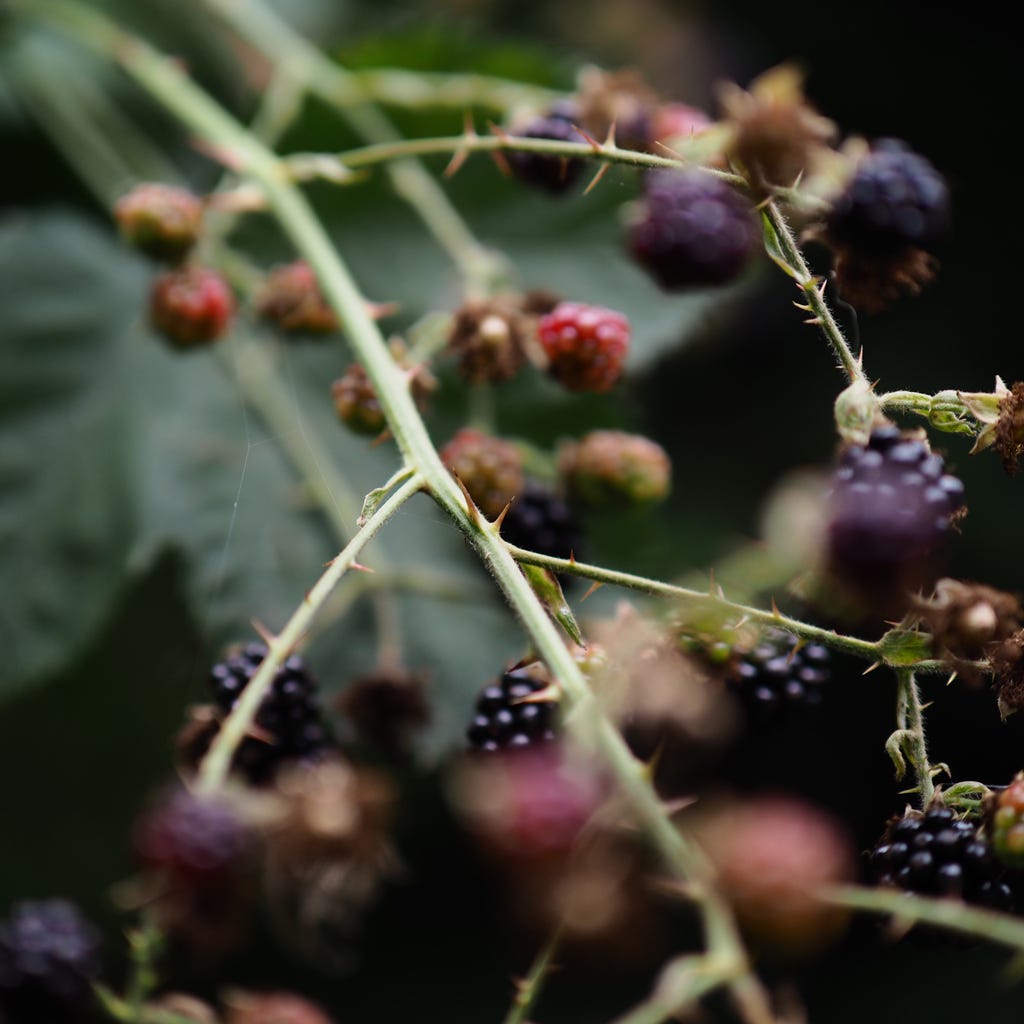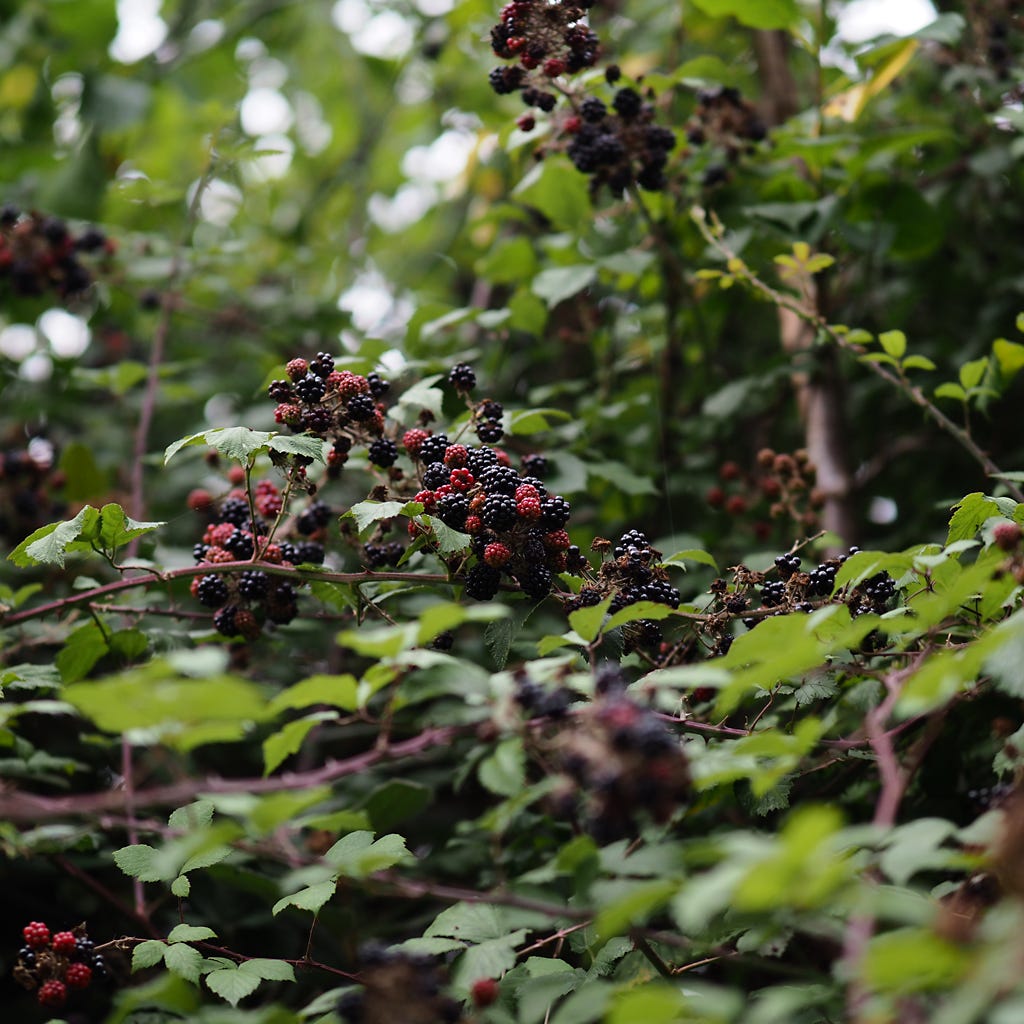Ask a bramble what the point of being a bramble is, and you might get a response. One late summer’s evening, when no one’s around to hear it talk back. Conquest, it would rasp, in a harsh whisper while trying to snag your hair or your eyebrow or the soft skin on the side of your face as you bend closer to hear. More space. More land. More bramble. (I’m not sure what sort of voice a bramble would have. I imagine it might be a little uncompromising, possibly a bit menacing – a prickly kind of hiss. They’re not the cuddliest of plants, after all.) This would come as no surprise.
The bramble’s capacity for growth is, after all, famously prodigious, on the page as much as in the garden. I’d intended to devote a couple of paragraphs to their familiar presence in To Stand and Stare, and they managed to romp away with a third of a chapter. It grew its way into the title of my Substack. If you were to stick a bramble in the centre of a football pitch, in two years, says a knowledgeable sounding chap on this episode of Radio 4’s Living World, it would have filled practically the whole field of play. I’m trying to square the maths with the same bloke announcing a few moments earlier that the bramble grows 20 to 30 feet in one year (a football pitch is, at a minimum, 295 feet long), but you get the picture, and a little hyperbole can be forgiven. These things can grow – three inches a day (7.5cm in the new money), just for fun, son.

So much for the bramble-centric perspective. Were you to ask, say, a woodland what the point of a bramble is, it might say to help to protect sapling trees from browsing deer, or to build a thicket for a nightingale to nest in.
For a gardener, there’s only one point in a bramble, just the one reason why we put up with its presence the whole livelong year (since put up with it we must; I’ve never yet met a gardener who managed completely to eradicate every bramble from their garden, even if that’s the kind of thing we should be aiming to do, and I think it almost certainly isn’t.). That reason is the blackberry, and the time of the blackberry is now.
I don’t think I’ll ever tire of writing about blackberries and brambles. They’re such an intrinsic part of the landscape in which we garden and, as such, something that demands our interaction and involvement daily. You can’t really ignore a bramble. Well, you can try, but a bramble won’t stand for it. Not only will it grow away rampantly, it will insert itself into your presence, either by reaching out over a path, or down from the canopy overhead, or by snagging your foot as you attempt to walk by without acknowledging its presence. Insistent, you see – not the most endearing of attributes, particularly when coupled with a prickly nature, but now, in August, as summer hurtles towards its climax, it’s an insistence that can be forgiven, as every importunate intervention is accompanied by fruit. Purple black, juicy, berries – okay, not actually berries, but rather compound drupes, though between you and me since we’re not just now attending a botanists’ convention or a pub quiz, berries will do just fine – the best of them warmed by the sun, their taste balanced perfectly between sweet and that degree of sour you could comfortably call ‘tart’ – just tipping over into that region with a really good crop, though not so much as to make your ears go a bit funny. We had two waves of fruit in the garden last year, the first we munched greedily, saving not a one, the second we watched coming, brimful of anticipation, brambles hanging heavy-laden out of the shrubs, promising much but delivering a disappointing watery sweetness with none of the necessary attendant acid. All top hat and no trousers. Such a let down.
This year we resolved to manage our harvest more sensibly, but really. Don’t be silly. None have yet made it to the kitchen. To do so, a blackberry would first have to make it into the tupperware optimistically brought along for the job, but the chance would be a fine thing. If it’s not instantly gobbled by the picker, it’s given as a healthy treat to one of the picker’s spaniels, both of whom have developed as much of a taste for the things as have their humans, though not yet the accompanying dexterity to pluck them from the bush mid bounce without getting a muzzle full of prickles. Windfall apples appear to be destined for a similar fate – really, just tasty tennis balls to a dog – and so the prospect of crumble and fruit pie seems to be receding in a manner frankly horrifying. When faced with the destructive exuberance of our beloved hounds, I’ve begun to comfort myself by muttering phrases such as “it’s their garden, too”, never entirely sure I found myself convincing. I tried something similar out last week when a client’s labrador launched a frenzied and gluttonous attack on the sweetcorn patch, felled every plant and scoffed the lot. “Oh well. I suppose you have to remember that it’s her garden, too”, I said, weakly. “Is it, though?”, came the response, quick as a flash. By this time, I wasn’t even sure what I believed myself.
The question, of course, is moot. The garden is not the property of you, or me, the children, or the dog. It belongs to the brambles, and that’s entirely their point.








Marvellous, thank you
Loved listening to this, thank you Andrew. Enjoy your blackberries.